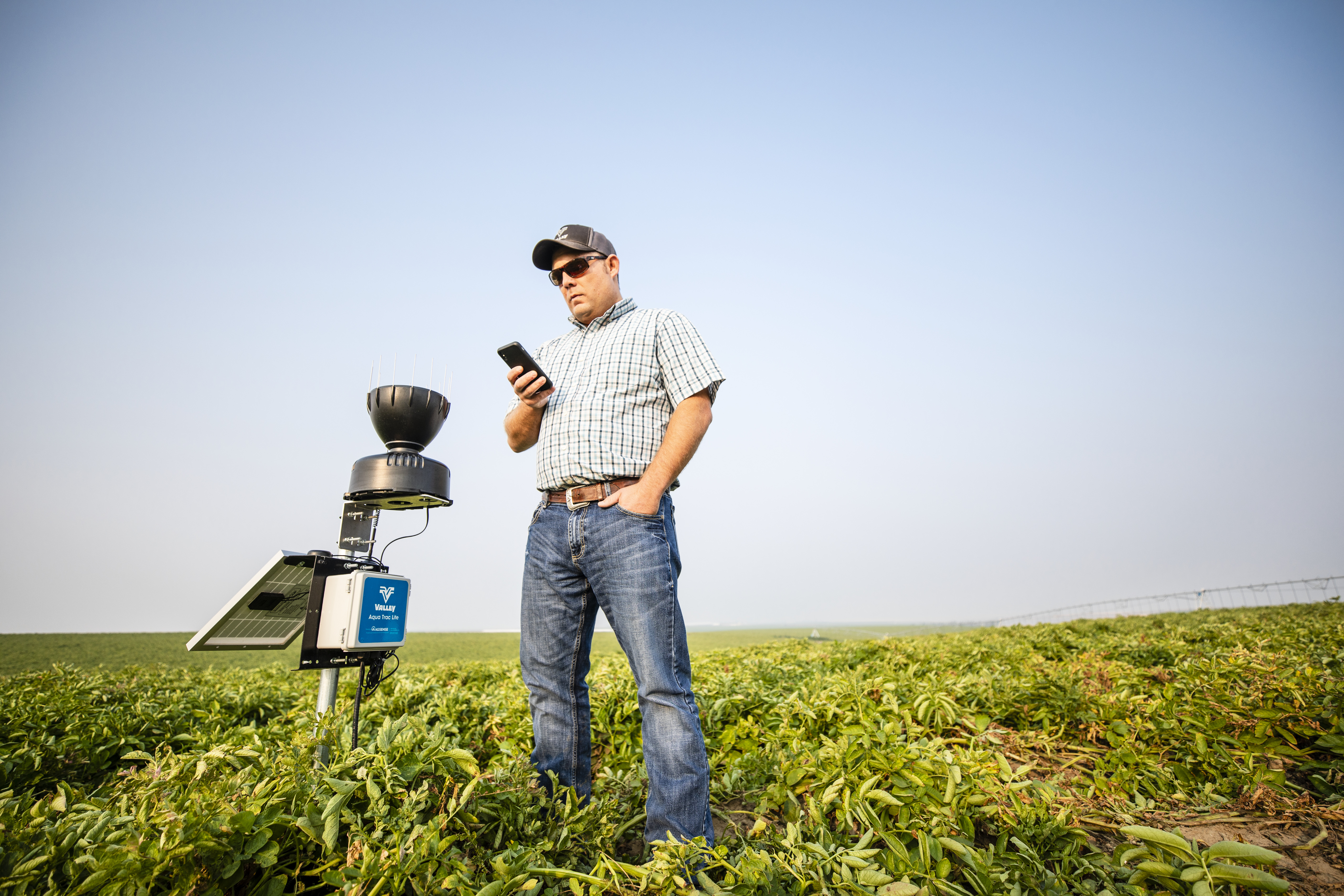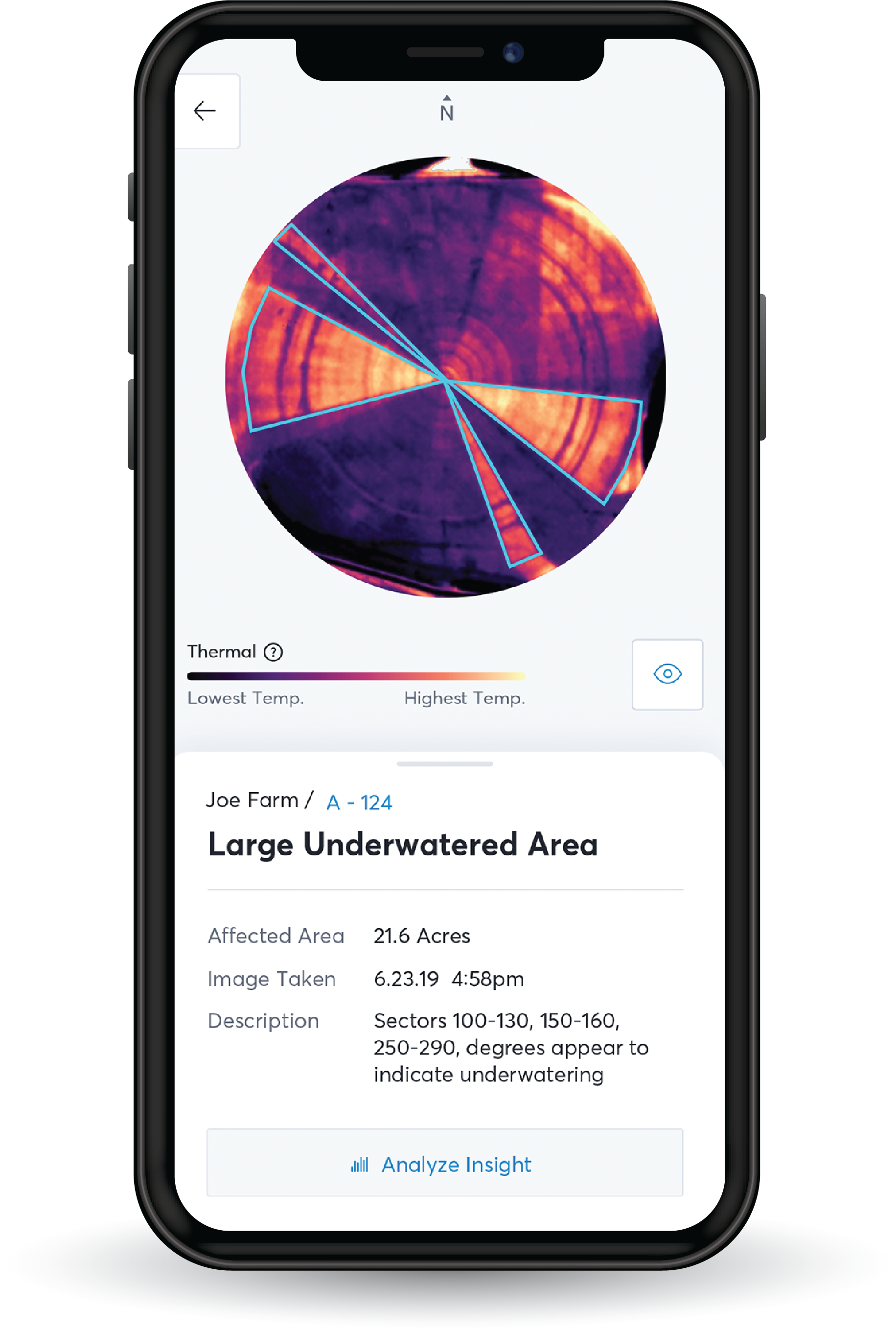While there are many considerations that comprise great crop health, none is more important than proper irrigation. Growing up on a potato farm myself, the first tool we chose to make sure our crop was doing well was—drumroll, please—a shovel.
In archaeology, the “shovel test” is checking if anything of historical significance can be found in the first five feet of soil. In agriculture, the shovel test is simpler, and checks whether all the technology actually works as promised. When we look at ag tech, there are many methods of irrigation management to ensure high-quality potatoes. Ultimately, each must stand up to the shovel test: when a grower digs in for himself and measures results at the field level. We at Valley Irrigation develop all of our precision irrigation solutions with the voice of our customers (you) in mind, so we want to provide a glimpse into some of the top factors in irrigation efficiency to consider throughout the potato growing season.
-
Soil Moisture Monitoring
In the pre-planting/pre-emergence stages, a little irrigation pre-planning can go a long way. Soil moisture should be at about 70 to 80 percent of field capacity. This amount will allow for additional rains without over-saturating the soil. A properly calibrated soil moisture probe is the best way to know the true moisture content in your fields and make sure it will support developing roots from planting through emergence.
Knowing correct soil moisture will help you make smarter decisions and avoid over-irrigating, which is, of course, an added expense. But it can also lower soil aeration, which leads to various bacteria and cankers, and decrease tuber respiration.

Soil moisture monitoring tools like Valley Aqua Trac help growers make smarter decisions about water usage.
-
Irrigation Scheduling
Knowing how much moisture is in your soil is one thing. Doing something about it is another. Irrigation scheduling is key. I cannot stress enough, nor can your potatoes, the importance of having a great scheduling plan. In my younger years of potato farming, when technology was not as accessible and was far more expensive, it was harder to apply water precisely when needed. Today, we are able to use simple apps like Valley Scheduling, part of the Valley 365 remote management platform, to remain efficient. Viewing data on soil moisture, along with the stages of crop development and weather data, is the easiest way to get real-time information from your field and apply irrigation at just the right time, saving time, energy and water.
Also, you no longer need to check when your neighbor has started irrigating. (It’s okay; we’ve all done it.)
-
Variable Rate Irrigation
Just as there are many different varieties of potatoes grown for grocery outlets or restaurants, there are also many growth stages before they get to the end consumer. A simple broadcast of irrigation at one setting may be convenient, but it’s probably not the best choice. Different areas of the field require different amounts of irrigation, based on soil type, elevation and other factors—especially during the tuberization and growth stages.
We have seen variable rate planting become a standard industry practice. Variable rate irrigation (VRI), however, has had a slower rate of adoption over the years, largely due to the perceived complexity or cost. But don’t rule it out. With the rising costs of water, and increasing demand for higher-value crops like potatoes, the need and return for VRI is certainly there. Reducing over- or under-watering, while maximizing efficiency on water and crop protectants, is exactly the prescription VRI is meant to provide.
-
Battling Pests & Disease
Crop rotation is a must to lessen disease in the soil. Pest and disease control is without question the top concern on every potato grower’s mind. Catching catastrophic events like pest infestation, pink rot, leaf necrosis and blight are primary when in the tuber growth and bulking stages. Further advancements in precision irrigation have created a new technological environment for optimal quality, higher health scores of potatoes and greater efficiency.
Valley and Prospera, have worked together to develop Valley Insights, which uses various types of imagery and state-of-the-art artificial intelligence to detect problems like plugged sprinklers and other crop health issues the naked eye can’t detect.

Valley Insights utilizes imagery and AI to detect problems in potato fields.
-
Predicting the Future
This allows you to take action and avoid potential problems before they affect yields. In the very near future, on-board sensors and cameras will help advance this anomaly detection even further, including the pests and diseases mentioned earlier, with higher-resolution images from the one piece of machinery that is in your fields, 24/7 for years on end: your pivot.
Now that’s efficient.
Thanks to Growers Everywhere
In the current state of global uncertainty regarding the impacts of COVID-19, we want to say thank you to all the farmers. The pandemic has changed the way we live, work and get food to the table. But one thing has not changed; in fact, these times have made it even clearer: Farmers are essential. Farmers will continue to take care of the land for future generations. Farmers will continue to grow crops to feed and clothe the world and keep the global food chain functioning. Thank you.